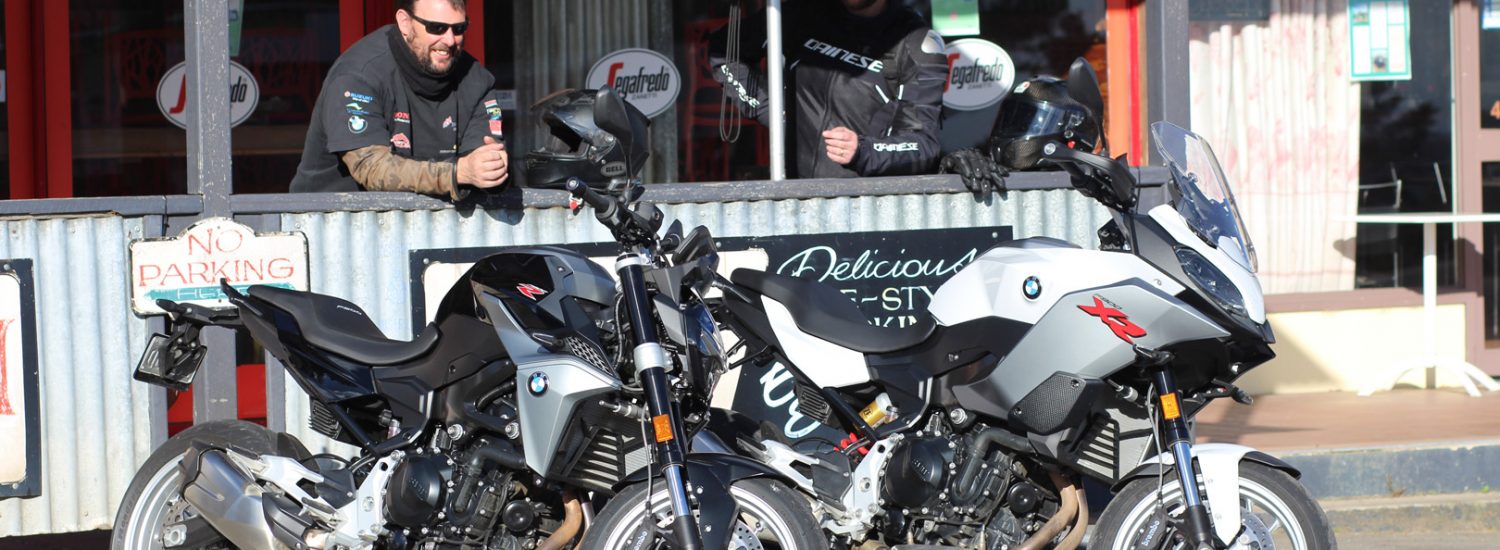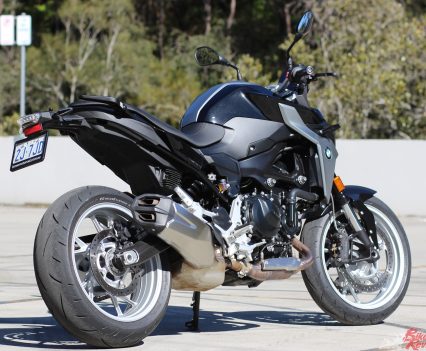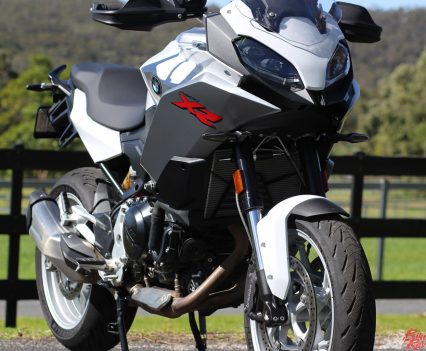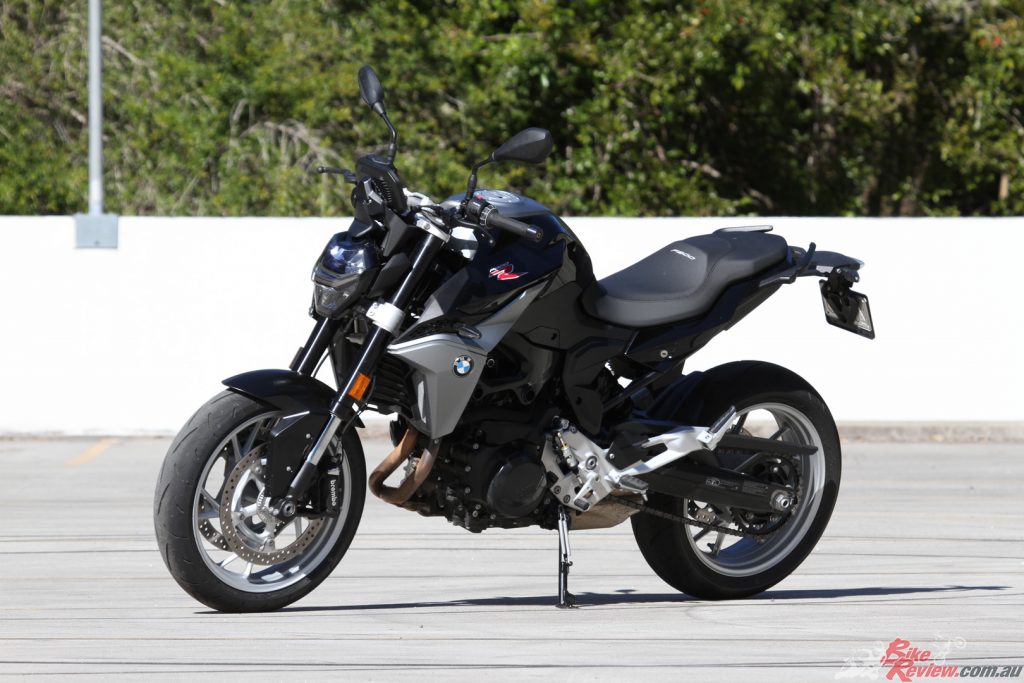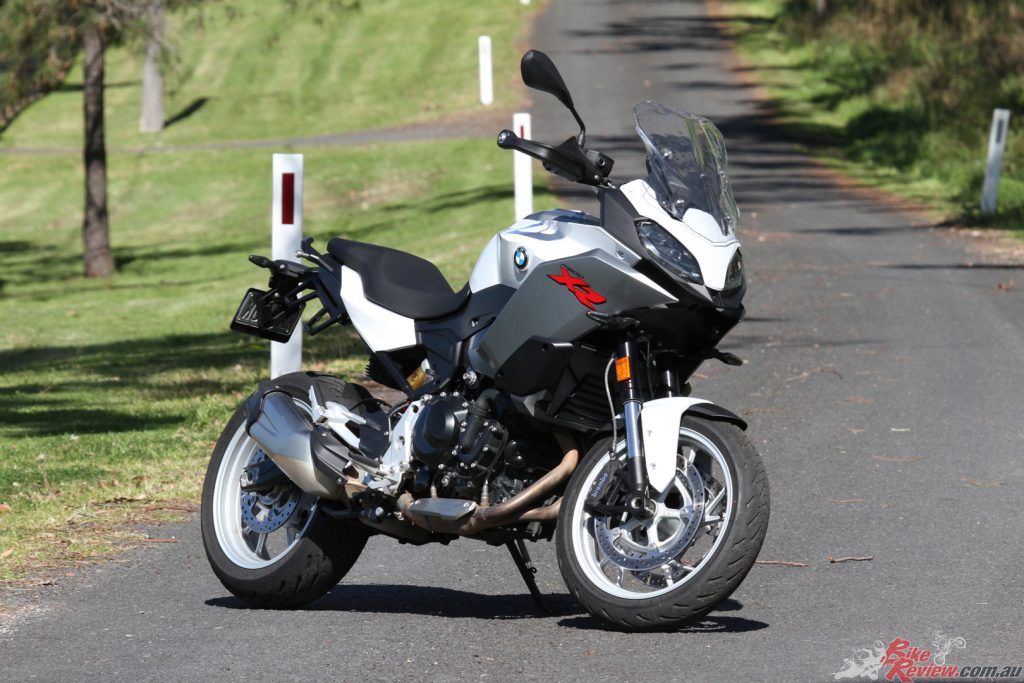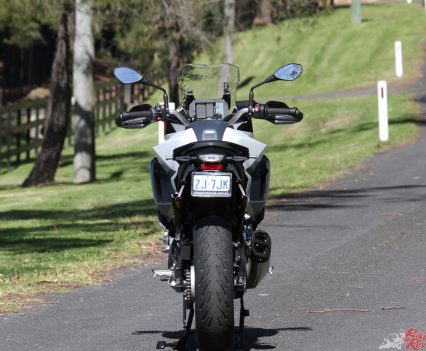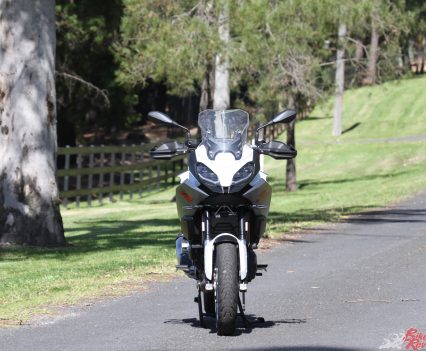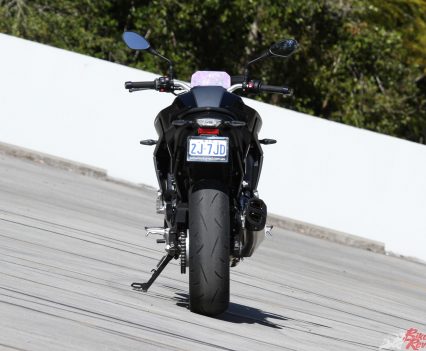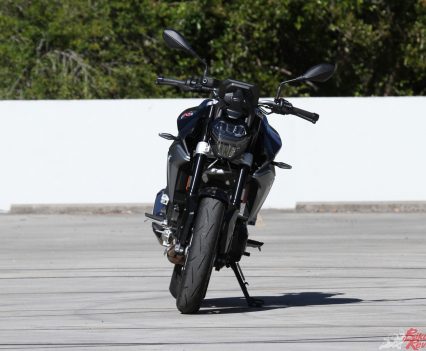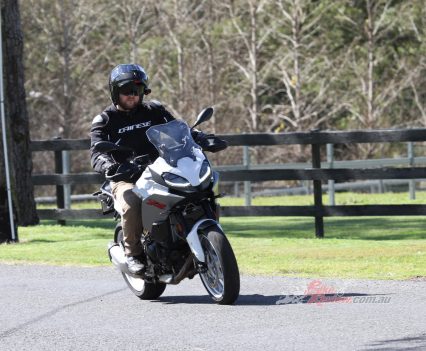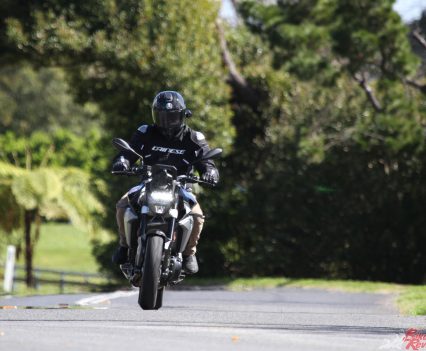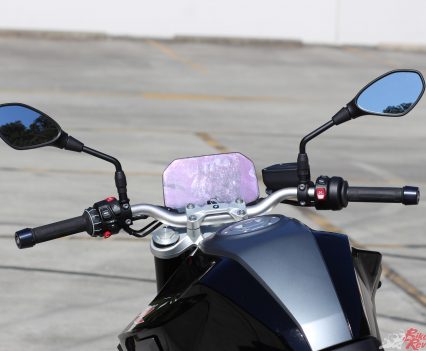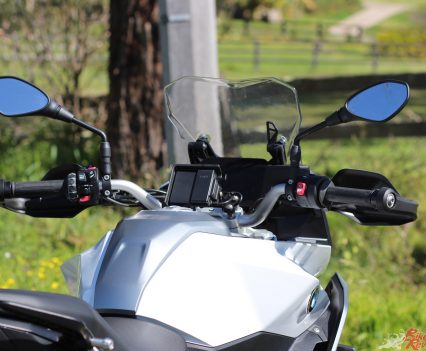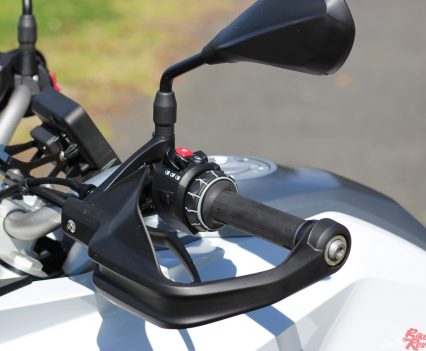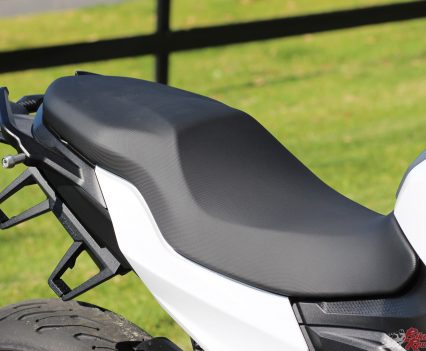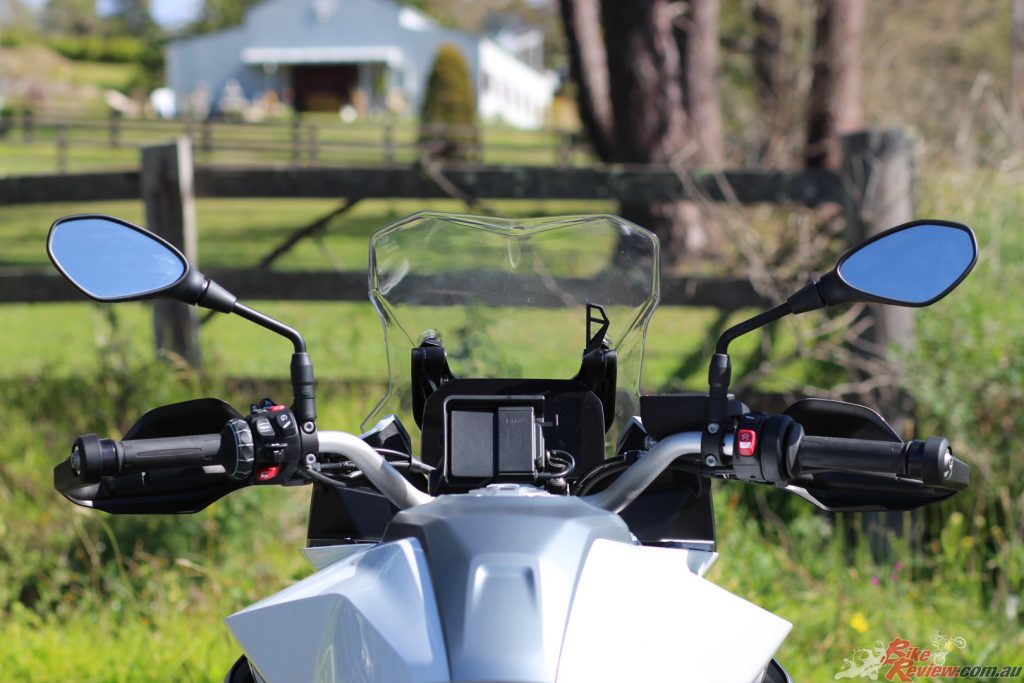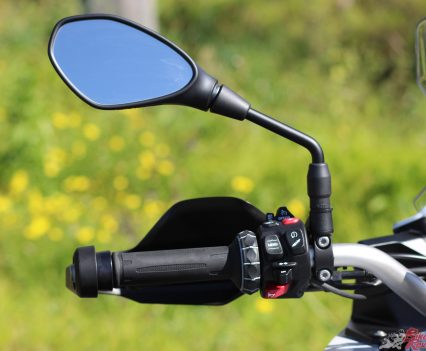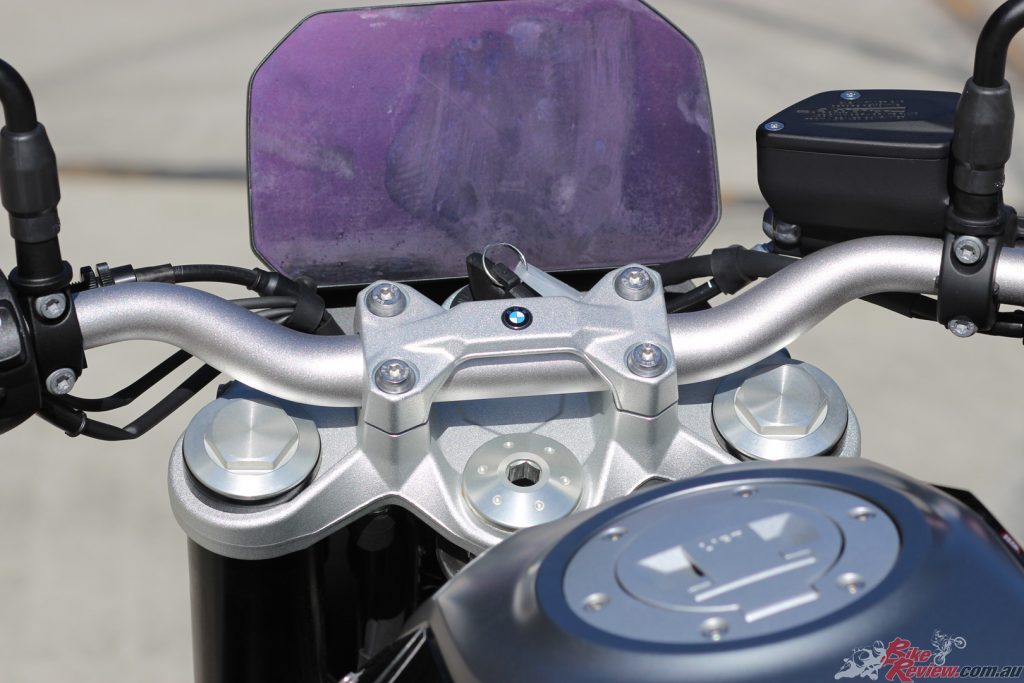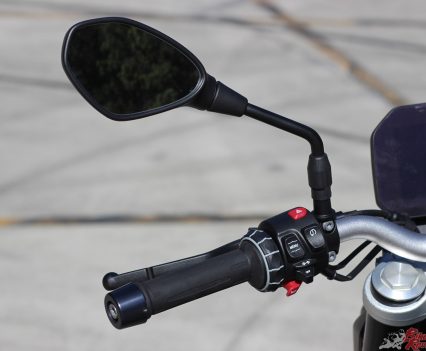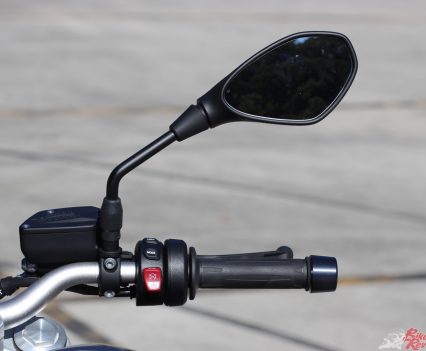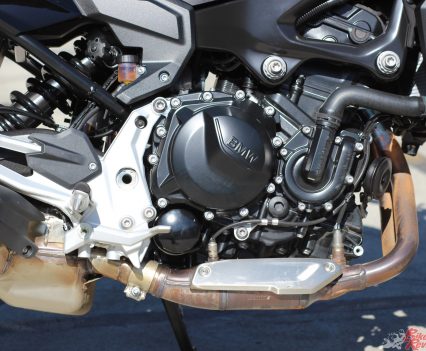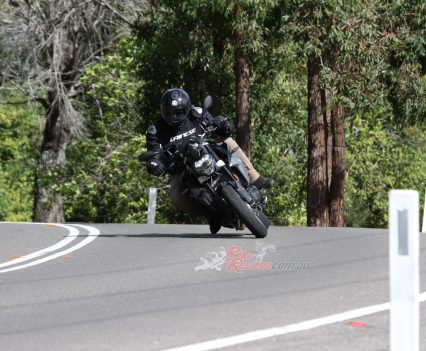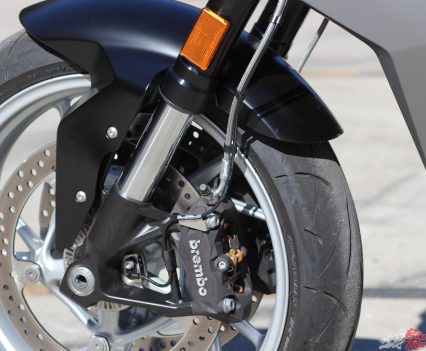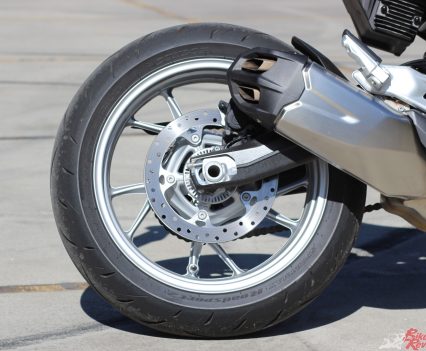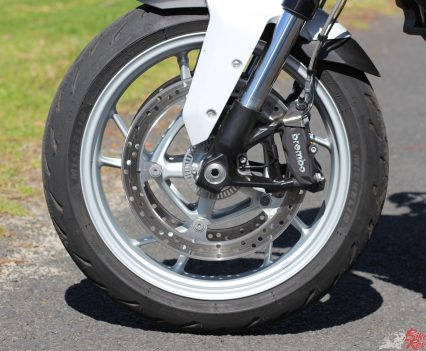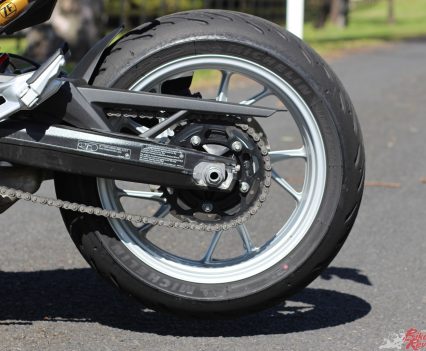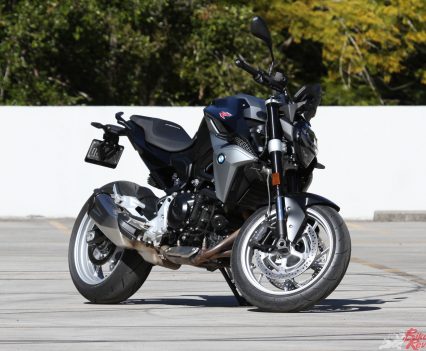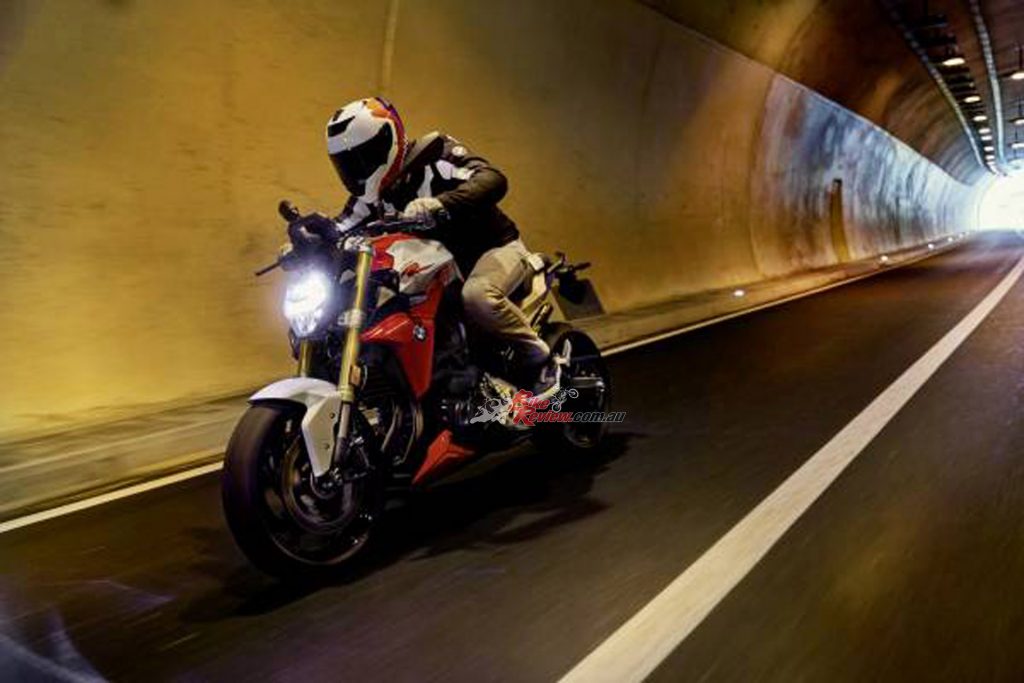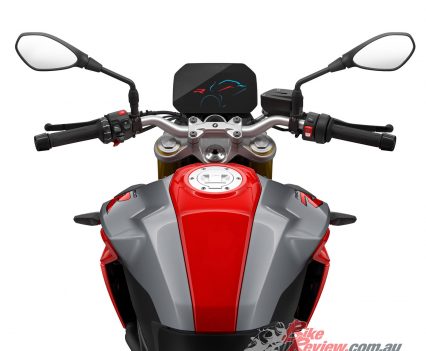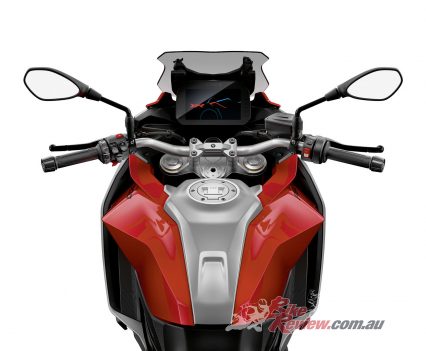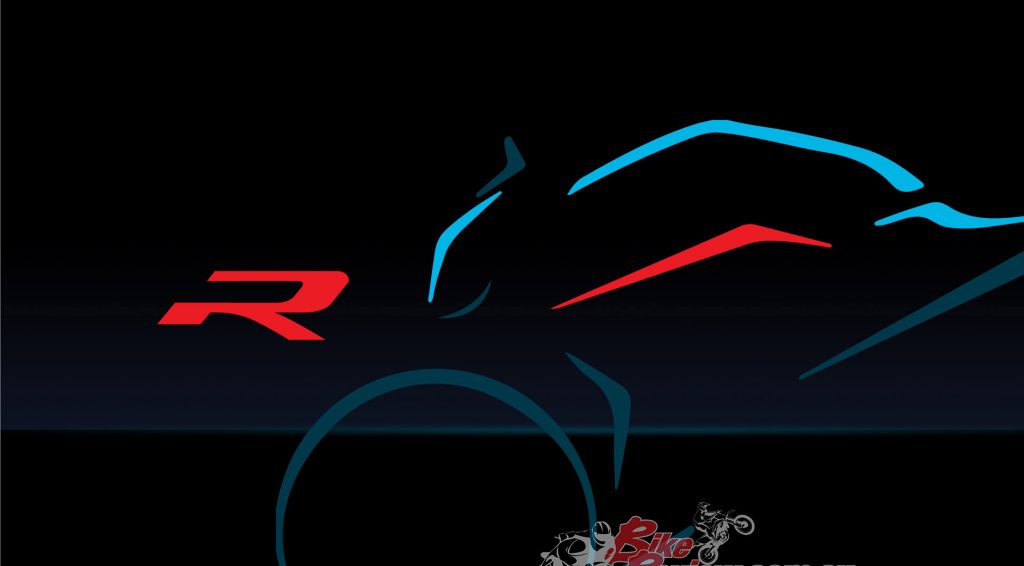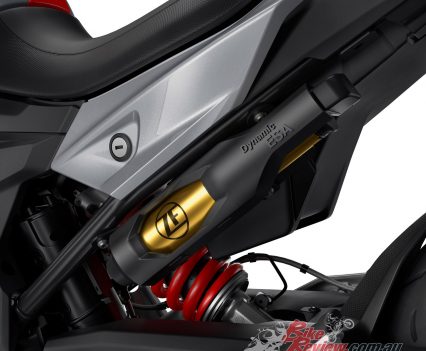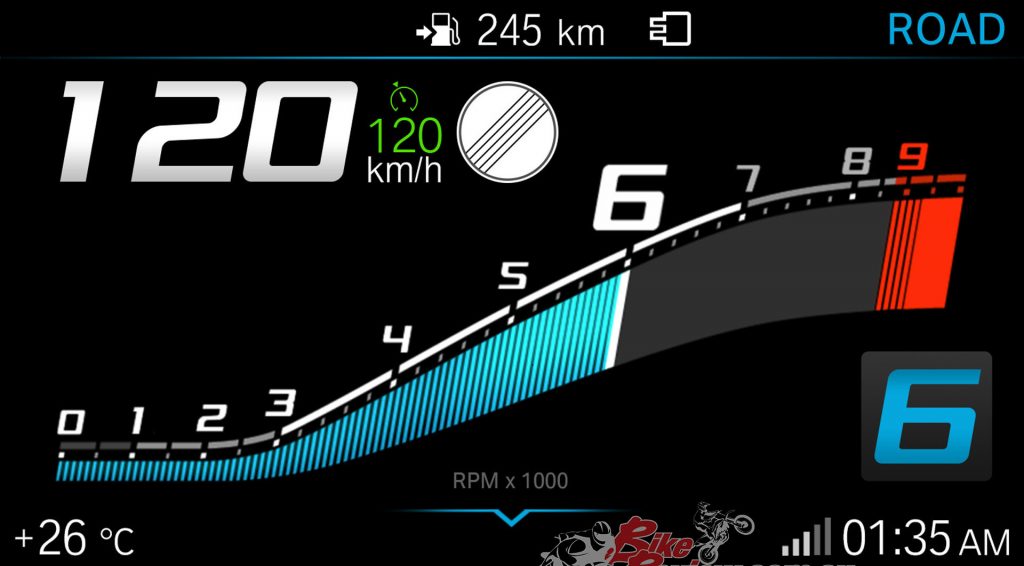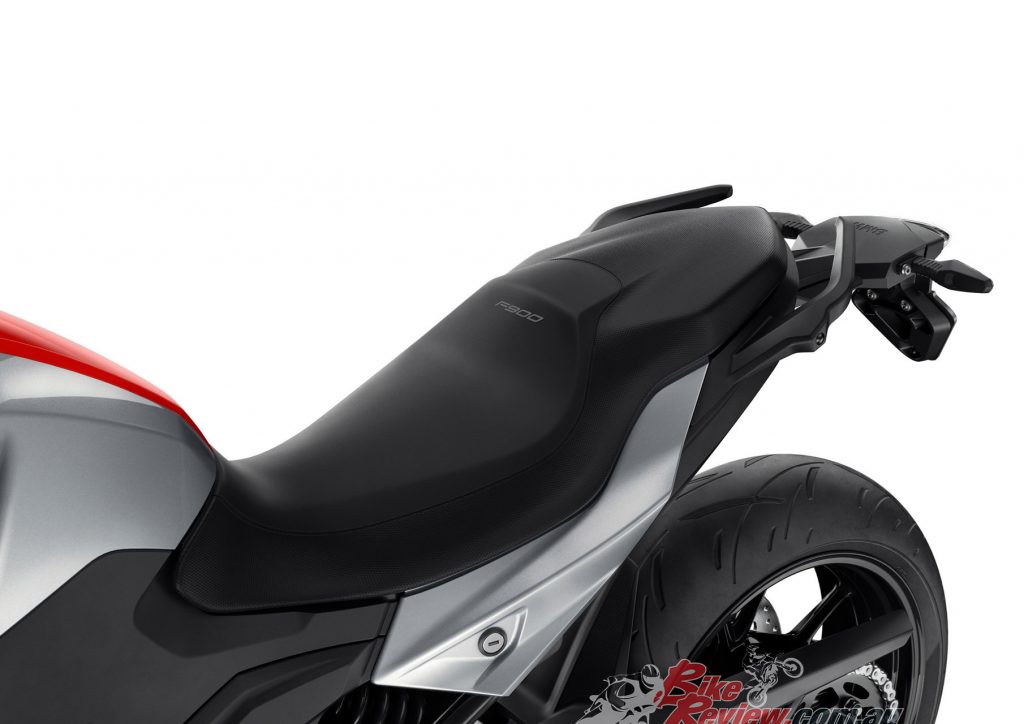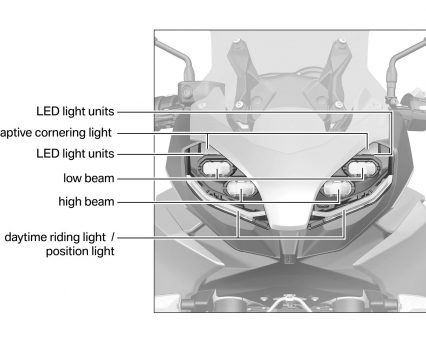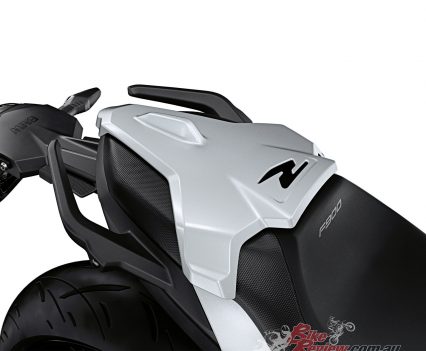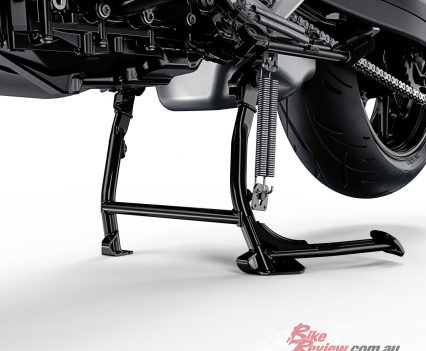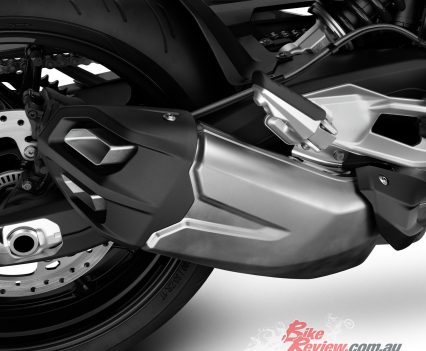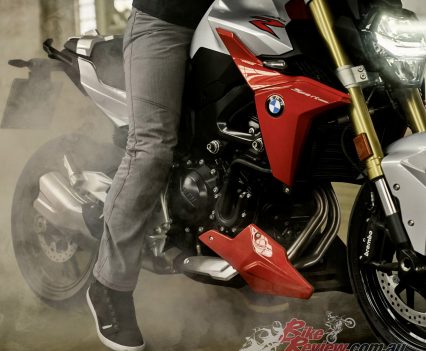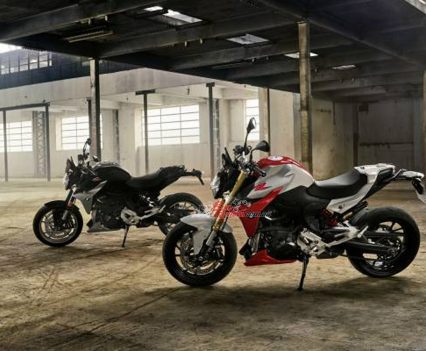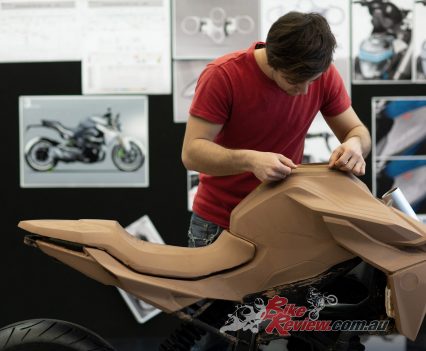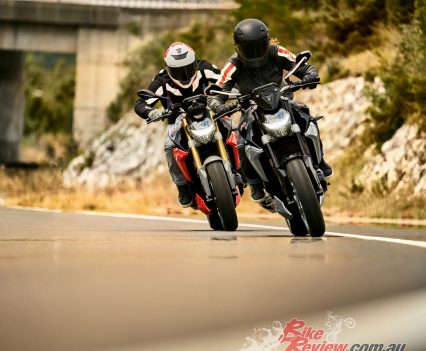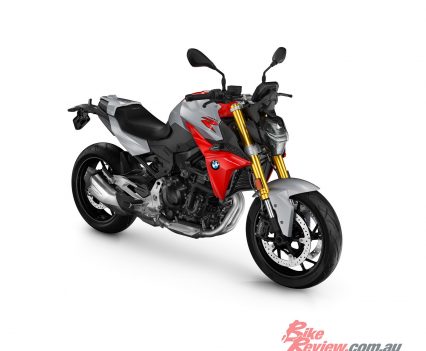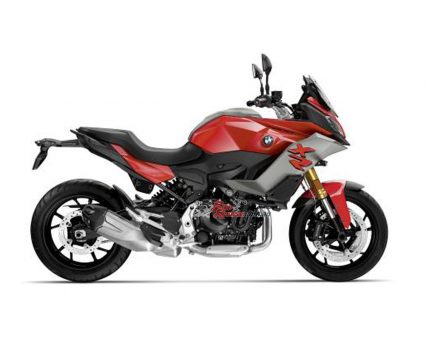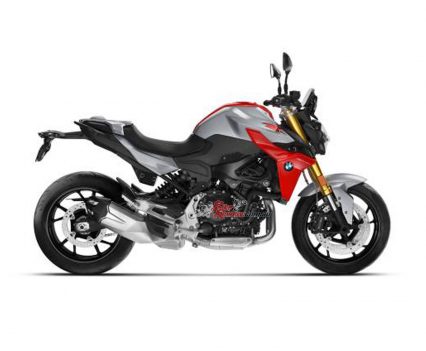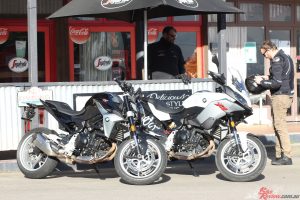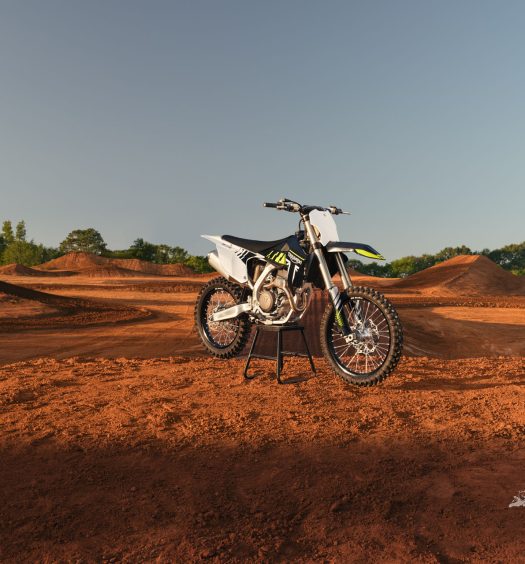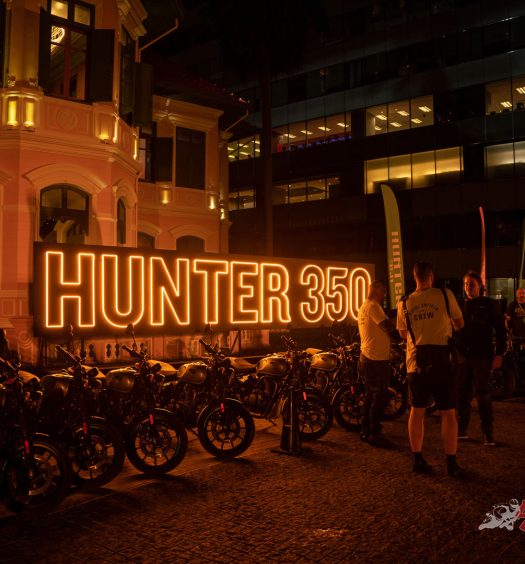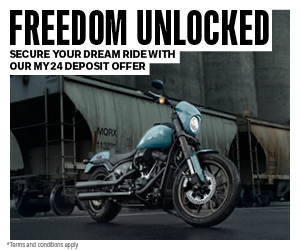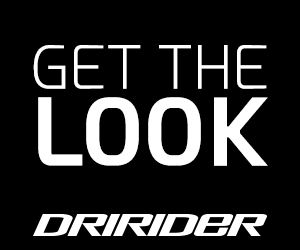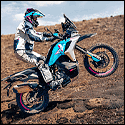We ride the 2020 BMW F 900 R sports naked & F 900 XR sports tourer back-to-back over a wide range of conditions, mostly at full throttle! Review: Jeff Ware Photography: Jack Maguire
BMW say the F 900 R & XR set the techno benchmark in segment with their stock spec and wide range of options; Dynamic ESA, Riding Modes Pro, Shift Assistant Pro, Intelligent Emergency Call, ABS Pro, MSR, DTC, DBC and RDC. We rode them WOT to find out WTH!
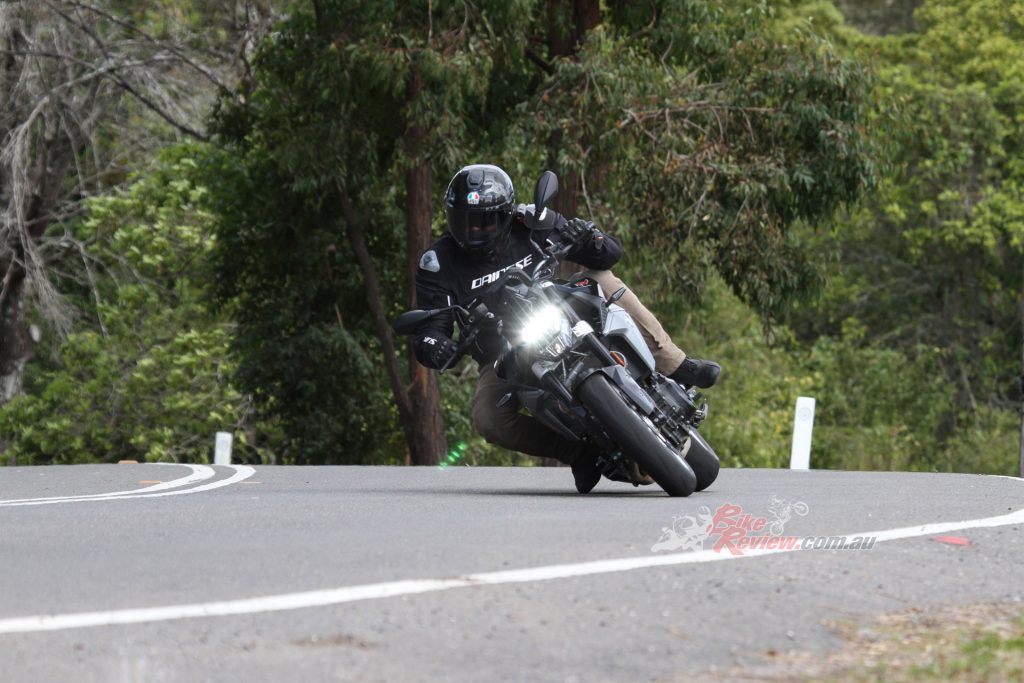
The new F 900 R. One of the best handling nakedbikes on the market. Predictable and smooth, just like the engine.
Our press bikes were supplied with the F 900 R wearing Dunlop Sportmax Roadsport 2 tyres, plus featuring Heated Grips, ABS, ASC, DTC, Gear Shift Assist Pro, Riding Modes Pro and an 835mm seat. The R is available here in the one specification, the Active pack, while the XR is available as a standard Aussie spec XR or as the XR Tour adding further packages such as Comfort, Touring, Dynamic and Active options. Our test bike was the Tour version.
The XR Tour had ABS, ASC, Ride Modes Pro, Gear Shift Assist Pro, Heated Grips, Cruise Control, Hand Guards and Dynamic ESA rear suspension, luggage bracket ready. It was wearing Michelin Road 5 GT tyres and had an 825mm seat height. We suggest you check out bmw-motorrad.com.au for more info, click through to the model and ‘Individualisation’ tab and choose the model options you want.

The F 900 XR, available from $19,835 Ride Away. We tested an up-specced version of the bike, with Dynamic ESA.
THE SAME BUT DIFFERENT
The F 900 R and the F 900 XR share the exact same platform. The long stroke (86mm x 77mm) engines are identical, including the mapping, timing and even the gearing. The both bikes have 43mm non-adjustable forks, with the XR boasting an additional 35mm of front travel. At the back, the XR has an extra 30mm of travel and the option (as per our bike) of Dynamic ESA.
The XR is also longer overall and in wheelbase, has reduced wheel caster (105.2 versus 114.3), is wider, taller at the seat, 8kg heavier than the F, has a larger fuel tank capacity (15.5L v 13L) and is fitted with Michelin long distance touring tyres, while the R gets sports tyres. The XR has a centre-stand, cruise control and hand guards. It also has the fairing, of course! Despite the differences, BMW claim the XR is the quickest from 0 – 100km/h by a 10th of a second thanks to the aero.
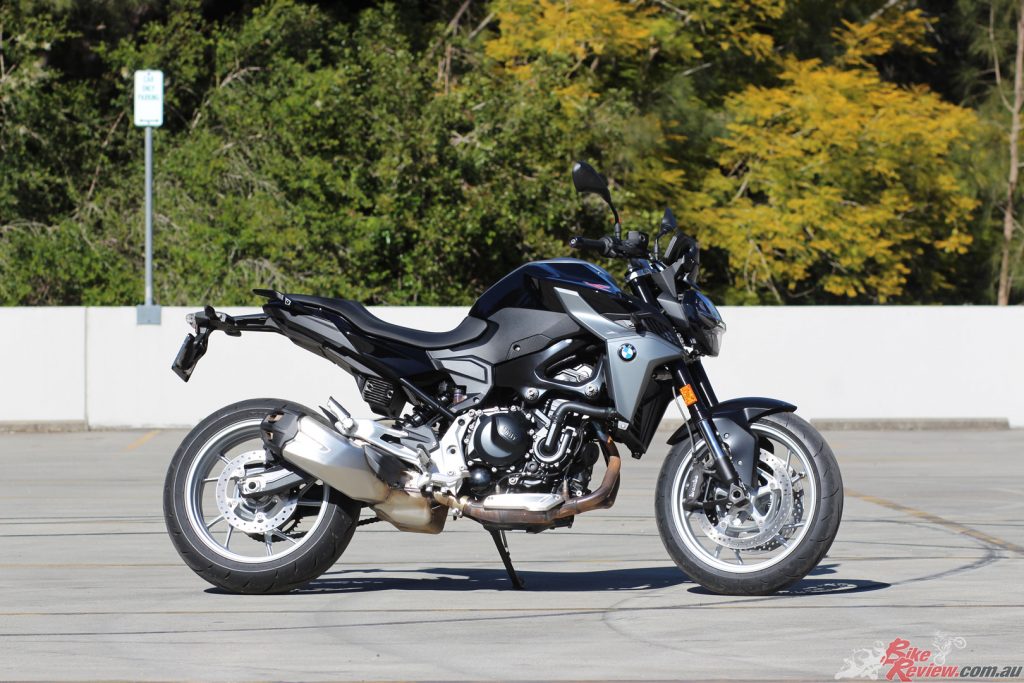
The F 900 R is a sporty mid capacity naked but is still a smooth and sensible ride. I doesn’t make you giggle but it definitely puts a long lasting smile on the dial. It’s the sensible nakedbike in the middleweight class. From $16,645 RA.
Looking at pricing, there is a $3190 AUD difference between the two, with the XR being the model demanding the premium price. That’s a fair whack of cash and that jump to as good as $20k puts the XR in a different class and category than the R. Yes, there are upgrades on the XR, but the R represents decent value given how it compares to the competition and how high spec the Aussie version is compared to what the rest of the world get, which we believe is not as upgraded as our R.
The F 900 R and F 900 XR offer two distinct yet equally fun platforms to enjoy that refined parallel twin engine. It offers a completely different riding experience to any other 900 class roadbikes. It lacks the punch of the Yamaha triple, the grunt of a Ducati V-twin or the outright balls of the incredible Kawasaki inline four. However, what is does offer is a broad, useable spread of controllable torque, enough power to get the heart racing and a slick gearbox and smooth clutch.

The F 900 XR has a centre-stand, touring tyres, fairing, hand guards, rear ESA, cruise, different geometry and more.
The price point of the two models sits in the premium end of both types of bike but the specification of each is high. If we look at the R we are competing for seats against bikes like the sub $13k Z900, similarly priced MT-09, MT-09SP, and even the KTM 790 Duke could sneak in there. You could even push the GSX-S750 into the mix… The BMW sits above some of them on price and many in specification aside from the Z900, which seems to be incredibly well priced and spec’d.
The XR has competition most directly from the Tracer GT, Multistrada 950, Tiger 900 GT Pro and distantly, the MV Agusta Turismo. I haven’t ridden the latest version of the Triumph, however, the XR narrowly takes top rostrum spot for me over the Yamaha, MV and the Ducati thanks to superior handling and brakes along with a more refined power delivery. Any outright acceleration deficits of the BMW will be compensated for once the corners start, where the XR really shines…
THE RIDES
These are both fantastic motorcycles, let’s get that straight. Both excel in most conditions, each having the edge on the other over different surfaces or circumstances. The F 900 R is, as expected, the lively and more hoon-like of the two and is a straight up performance naked. The XR, on the other hand, has the comfort and ride of a touring machine without losing out too much on agility. I would tour on either bike but the XR is the sensible option with the adjustable screen, hand guards, cruise, roominess and additional suspension travel.
I’d been riding the F 900 R for a week or so before our one-day 400km loop riding the R and XR back-to-back. During that first week I used the R as a runaround, did some scratching, and also attempted to do a 200km straight freeway haul but it was not possible without frequent stops to stretch. If you are tall (I’m 187cm) then the chances are you too will find the leg room inadequate on the R with the 835mm seat fitted. The taller seat options will be a must-have item… I’d be trying the 865mm one.

The F 900 R seat height (measured) was 835mm. This is quite cramped as you can see in the picture. The distance from seat to peg is just 300mm. Go for the higher seat option.
Onboard the XR, the extra legroom is appreciated. The XR has taller handlebars, while the footpegs are around 20mm lower and 20mm further forward than those on the sportier R. Adding to the comfort is a smoother and easier gear shift operation than that on the nakedbike version, thanks to a near double leverage ratio on the gearlever, which is actually pivoting where the R footpeg is mounted. The R gearlever is a stubby one and the shift is very heavy, even with the addition of Gear Shift Assist Pro.
The seat on the XR, however, could still be considered close to the footpegs for a taller rider and like on the R, I’d definitely opt for one of the taller seat options available from BMW. It would just make the ride that bit more pleasant and comfortable at the one-hour-plus mark. Aside from the seat-to-peg issues (which are always a compromise for sporty ground clearance), the XR is a comfortable bike that, with the ESA option on the rear and the extra suspension travel, is a real mile muncher.
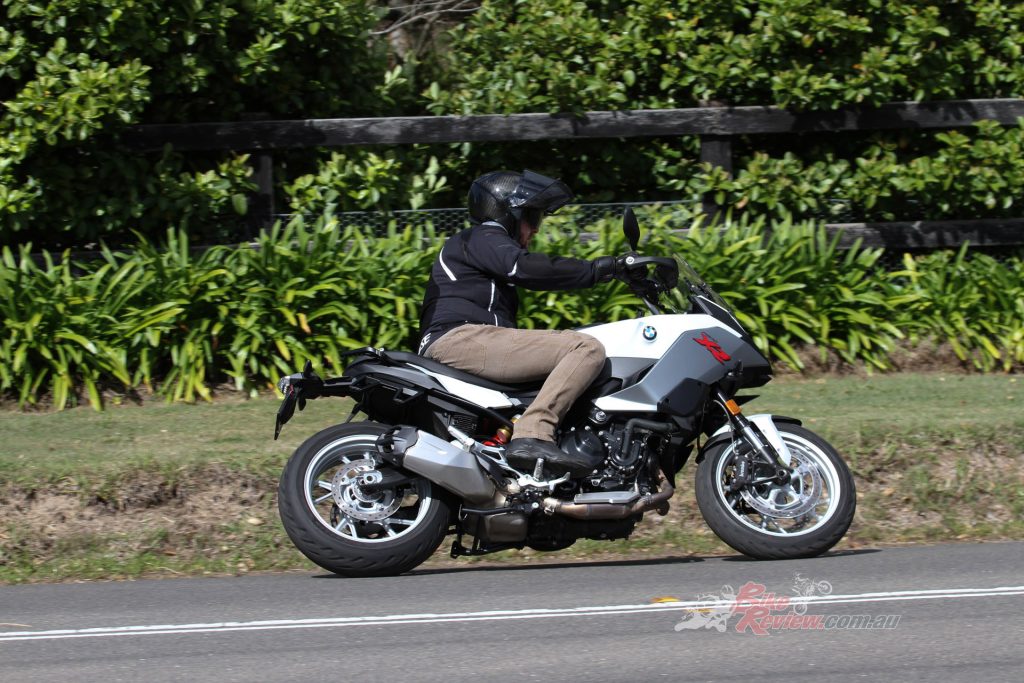
A roomier, more relaxed riding position on the XR, while ground clearance remains ample. I only touched the footpegs down a few times, which was near enough to the limitations of the Michelin touring tyres anyway.
Aside from the big screen and fairing, most of everything else between the bikes is the same – the levers, controls (aside from ESA and Cruise on the XR), the amazing BMW TFT dash, which is the best in the business thanks to its intuitive design and easy to navigate menu. That scroll wheel is a genius invention that makes having a seemingly endless amount of options over a motorcycle a fun experience rather than an annoying or daunting one. Check out the Video on the dash here.
Hitting the open freeway first off, having the addition of cruise control on the XR (I can’t believe the R doesn’t have cruise control), plus the screen, really makes for a pleasant experience while slabbing it. The cruise is easy to operate and the engine is smooth at highway speeds. The screen is manually adjustable but I didn’t touch it.There was some wind noise. The main thing is that it was noise off the top of my AGV, not pressure on the front of my helmet. With a comfort seat fitted, I reckon the XR would be a brilliant all day ride, an Interstate hauler.
On the F 900 R, as mentioned, there is no cruise control. However, the nakedbike is still a workable long haul bike sans legroom. For shorter riders, or taller riders with the correct seat fitted, highway stints will be fine. It’s amazing how much the 6.5in TFT display deflects wind, it actually works as a small flyscreen. Which brings me to another concern, the way the TFT is so exposed to being hit by rocks on the open road, or easily snapped in a small crash, is a bit of a worry. It looks fantastic though, the way it is so prominent on the front of the bike.
The engine, identical in both bikes, is at first underwhelming. In fact, when I picked the F 900 R up from Ian Furlong at Worthington Motorcycles, where BMW Motorrad Australia send press units for us, I ran through the Ride Modes a few times on the way home thinking that it was in Rain or something like that. The engine is more progressive and smooth than it was in the F 800, with a flatter top end.
It took a day outside town, where I could stretch the bike’s legs and get some flow going, before I truly understood and appreciated the characteristics of this very mild mannered engine. It certainly isn’t a thrilling motor, however, it always has you backed in any gear or speed, and it is solid in the mid-range.
After experiencing the engine at nine tenths in the twisty turns, on fast country roads, in the rain and the dry, testing the Ride Modes and other settings, I understood and appreciated what BMW have done to make this engine so versatile and, well, safe. However, the lack of wow factor and outright giggles could deter some nakedbike fans when it comes to the R version, while with the XR, perhaps it is much more in character with the bike. One thing I would recommend is talking your BMW dealer into letting you have a proper long ride rather than a spin around the block before you judge either model. It takes time for the engine to grow on you. Speed Dating won’t create a match made in heaven…
The gearbox ratios are well spaced and on the wider side, and the final gearing tall. This takes advantage of the broad torque curve of the twin, but has the obvious downside of damping outright acceleration. Unlike, say, the Yamaha MT-09 or the Z900, or the Multistrada 950, the BMW won’t try to lift the front wheel under power alone. That’s not to say the 105hp is not impressive, it just delivers that power in a very subtle way, making for tractable, progressive drive rather than explosive acceleration.
The F 900 R with Active Package has Rain, Road, Dynamic and Dynamic Pro Ride Modes. No guessing where we left ours after trying the others. Dynamic Pro had that edge, a little more responsive and thrilling yet still perfectly OK in wet or slick conditions. We rode the XR mainly in Road or Dynamic. It just seemed to suit the lazier character of the bike more. Clutch action is smooth and progressive on both machines, engine braking perfectly controlled, while fuelling is smooth and glitch free. Overall the F 900 power package is refined and typical BMW…

Chasing the twisties is where the F 900 R is happy. The Dunlops, firm suspension and brilliant front-end make this a very capable cornering machine. It’s a bike that gives the rider confidence and good feel.
Hitting the corners, these are two quite different bikes. On the smooth, grippy hotmix, the F 900 R is incredibly capable. Comparing two bikes wearing completely different rubber is always tough, but with a sportier riding position, more footpeg clearance and the sports tyres, the F 900 R is a fair way ahead of the XR in hard cornering. That’s not saying the XR is left behind, it just means the F 900 R is doing it easier. It isn’t the quickest steering bike on the planet, in fact, the ‘bars are fairly narrow by nakedbike standards and the geometry conservative.
Throw in the steering damper and grippy tyres and the steering is on the heavy side, while changes of direction from full lean to full lean does bring the weight of the bike(s) into the mix. But pick your line early and carry old school corner speed and, if you are a front-end rider like me, the F 900 R is very fast and rewarding. On the fast bumpy roads, the shock can be overwhelmed and the XR is the choice there by a fair margin.
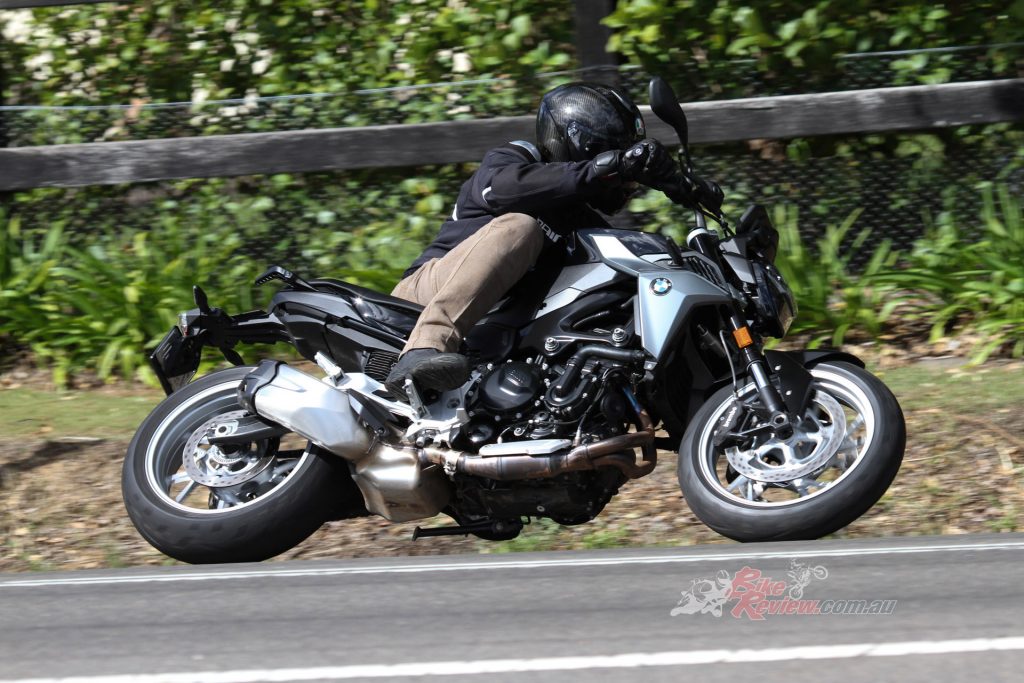
The F 900 R, despite basic suspension and being a heavy machine, is a brilliant tool in the twisties.
On the brakes into turns, the front-end is supportive and the feel is intimate. The brakes are solid, with strong initial bite and good modulation. I don’t like the levers though, they look and feel cheap and the span adjuster wheel doesn’t seem to lock home in a very solid way. The rear brake on both bikes is fair, giving enough bite to help corner and for hard stopping. I experienced no fade on either bike at any time and I didn’t notice the ABS at all.
The R drives off turns well, with support and no running wide, however, that rear shock as mentioned can become overwhelmed at times. It’d be nice to have full adjustability.
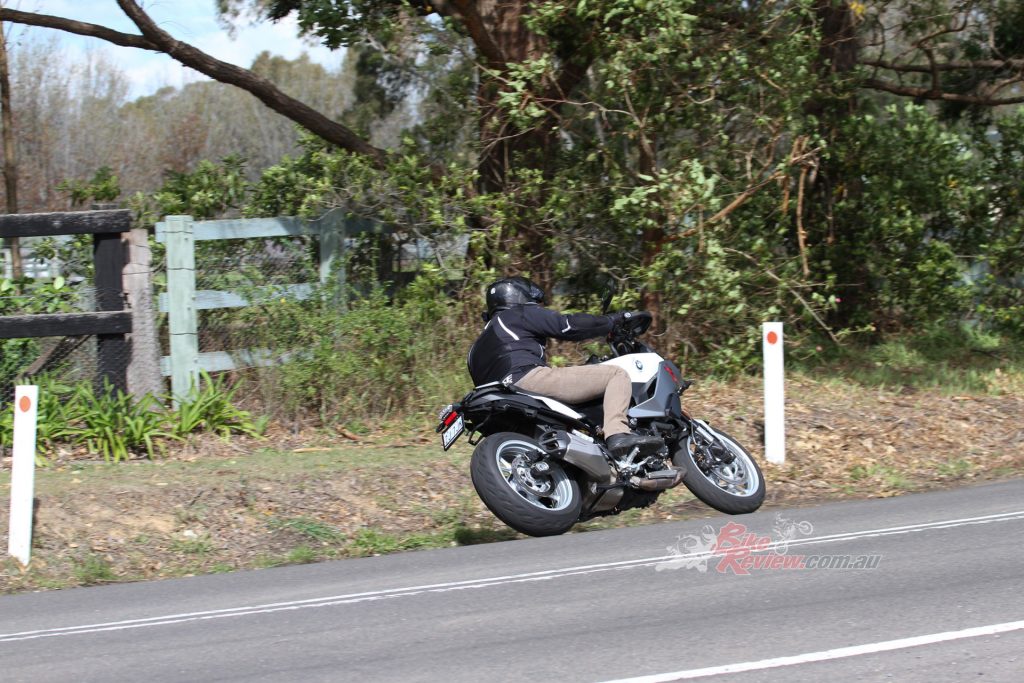
The F 900 XR likes to be grabbed by the ‘bars and thrown at the corners. It’s a great machine on bumpy roads.
The F 900 XR wore Michelin touring tyres, which lacked the feel of the Dunlop sports tyres on the R and of course the outright grip, however, they were more than up to the job and we rode the bikes at basically the same pace in the same places, it’s just that when things got serious, the XR was the one getting loose, while the R remained planted and on line. The same on the brakes, the XR would squirm around a little and really liked to be grabbed and thrown at the turns, smashing the apex and firing it off at the next one. Bumps? You can completely ignore those on the XR, you just hit them and keep going!
I had a really fast run with Jack and Andrew through a particularly fast and narrow road and I reckon I had just about every part of the electrics on the XR working overtime keeping Jack at bay on the small sportsbike he was riding. The XR did the job and really surprised me. The harder you ride it, the better it gets. On the same road, the R was a bit of a handful.
With the ESA on the rear of the XR, plus the longer travel at each end, the advantage is quite a lot and let’s face it, 90 per cent of our Aussie roads are crap! The upright position gives good control and I felt I could really wrestle the XR through anything, while the R required more of a planned and precise approach. Both pretty much go from A to B at the same pace, just in different ways.
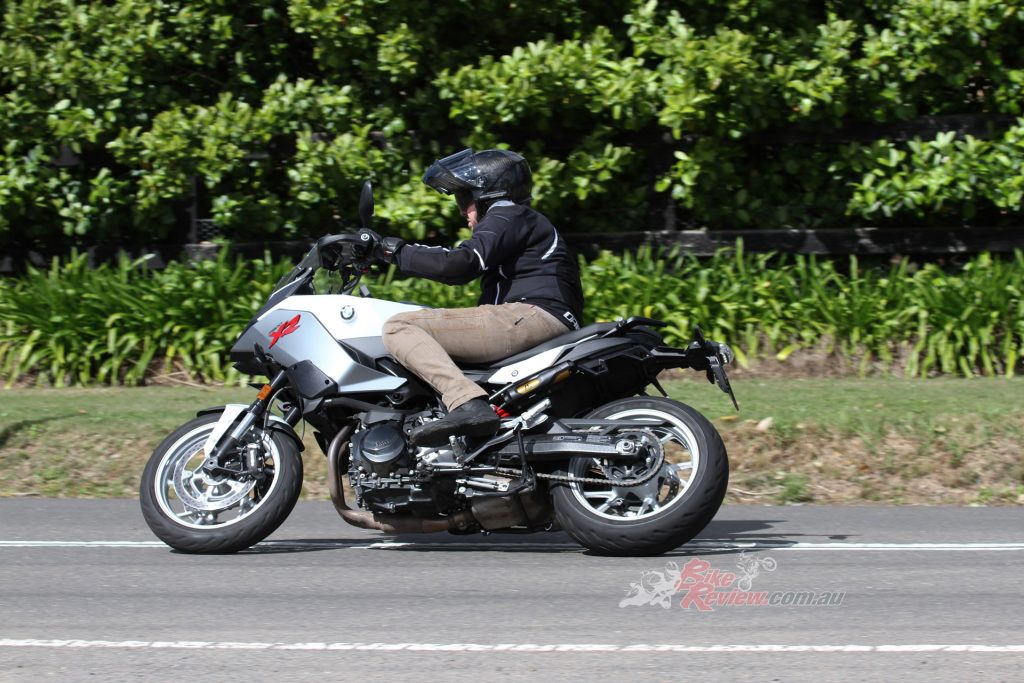
There is some squat on the softer ESA settings but the trade off is superior comfort on bumpy roads.
Overall, both bikes are impressive and a big step forward from the F 800 models. It’s also great to have a twin cylinder version of the XR. All of the basics are good as is expected from BMW; mirrors, lights, power outlets, dash, switchgear, seat(s), fit and finish and general quality and appearance are premium, while the price is competitive.
Whether you choose the F 900 R or F 900 XR is purely based on what your needs and riding habits are. If you predominantly ride sport and weekend scratching, want to do the odd track day and possibly have a short commute, the R is the bike for you. On the other hand if you want to go away with mates on long trips, ride fast country roads and still have fun on your local twisties, the XR is the choice. It’s sporty enough for roads, I wouldn’t do a track day on one, yet like the S 1000 XR, will take you long distances in relative comfort.
I loved riding both of these bikes but for me, it’s the F 900 R, simply because of the sporty edge and the not insignificant lower price point compared to the XR…
Tech Talk from BMW Motorrad
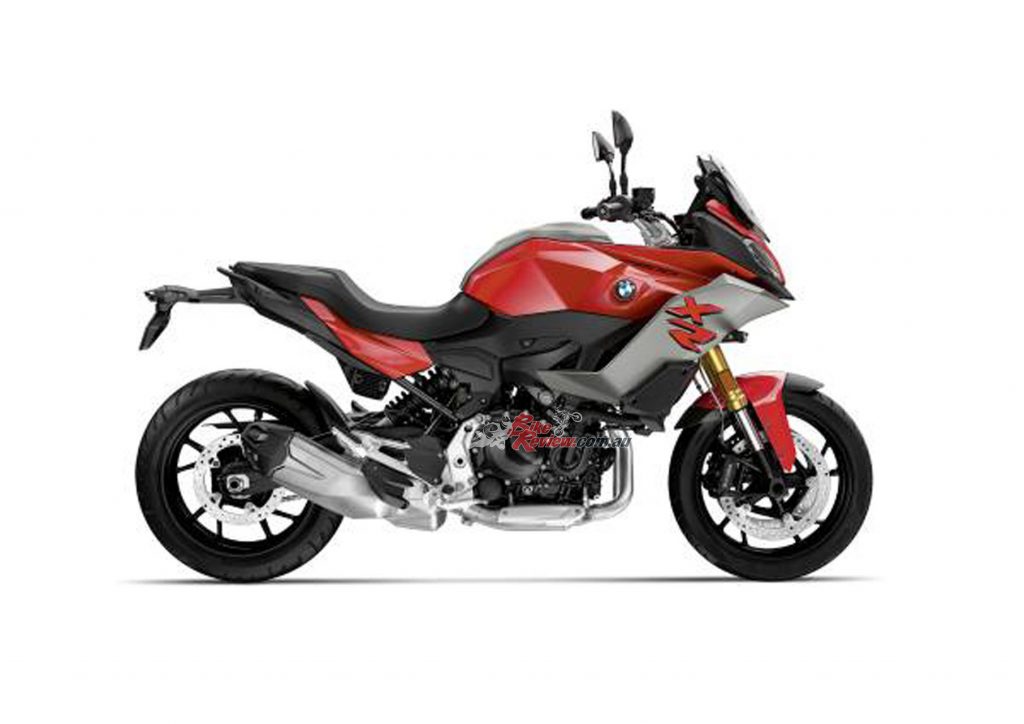
2020 BMW F 900 XR joins the big brother S 1000 XR. BMW class it as an Adventure bike but it is a sports tourer.
Having established this family with the BMW S 1000 XR, BMW Motorrad is now expanding it with the addition of a mid-range model.
The new F 900 XR benefits from the technology transfer from the upper class: Adaptive Cornering Lights, Keyless Ride or Intelligent Emergency Call are all unique features in the mid-range segment.
As well as providing an option for sports riders, the XR is also aimed at newcomers and motorcycle returnees due to its easy accessibility, low minimum seat height and attractive entry price.
BMW claim the F 900 R and F 900 XR set the technological benchmark in the mid-range segment with their level of standard equipment, including Connectivity and LED all round as standard and their wide range of optional extras. These extras in some cases are unique in this class and include Dynamic ESA, Riding Modes Pro, Shift Assistant Pro, ABS Pro, MSR, DTC, DBC and RDC. Our F 900 R is the highest standard spec globally but we don’t get the full house ESC option here.
The engine, which was first introduced in 2018 on the F 850 GS, now produces 77kW and an even fuller torque curve thanks to an increase in capacity from 853cc to 895cc. It complements this with an evocative sound, which is the result of an ignition distance of 270/450 degrees and a new underfloor silencer system.
In addition to the standard slipper clutch, the new F 900 R and F 900 XR can be fitted with engine drag torque control (MSR) for the first time. This prevents the rear wheel from slipping as a result of abrupt throttling or downshifting and thereby ensures even greater levels of safety.
The new F 900 R and F 900 XR offer the Rain and Road riding modes as standard, while ABS and ASC Automatic Stability Control are also offered at the base specification level. Ex works option Riding Modes Pro allows the sporty characteristics of the new F 900 R and F 900 XR to be fully realised. The additional riding modes Dynamic and Dynamic Pro, Dynamic Traction Control DTC and banking capable ABS Pro are available, along with Dynamic Brake Control (DBC) and engine drag torque control (MSR).
The new F 900 R and F 900 XR make use of a steel bridge monocoque frame that integrates the engine as a load-bearing element and a fuel tank that is now back in its classic position in front of the rider. Front wheel control is handled by inverted forks, while the rear wheel is guided by a double-sided swingarm with central suspension strut. The lightweight plastic-welded fuel tanks with a capacity of 15.5L (F 900 XR) and 13 litres (F 900 R) are claimed as a world first in motorcycle construction.
Colour 6.5-inch TFT screen with BMW Motorrad Connectivity is offered as standard. BMW Motorrad developers attached great importance to optimum readability for the instrument cluster, even in difficult lighting conditions.
In addition, information diversity, display quality and user-friendliness were developed to maximise the experience for all riders. Graphics on the screen are visually adapted to sporty on-road riding, while additional core screens are available in conjunction with the optional Pro riding modes.
The standard BMW Motorrad Connectivity is a unique feature in the mid-range segment, offering the ability to conveniently talk on the phone, listen to music or navigate while riding.
BMW say the F 900 R offers a particularly sporty, active seating position while the F 900 XR delivers an impressively active yet relaxed riding position for touring and travelling.
The front fairing, which includes an adjustable windshield, combines a sporty look with sound rider protection. Various low and high seats along with the optional lowering feature also allow individual adjustment to various body heights.
The new F 900 R is available in Blackstorm metallic, San Marino Blue metallic and Style Sport in Hockenheim Silver metallic/Racing Red.
In addition to Light White, the new F 900 XR offers two Style variants: Style Exclusive in Galvanic Gold metallic and Sport in Racing Red.
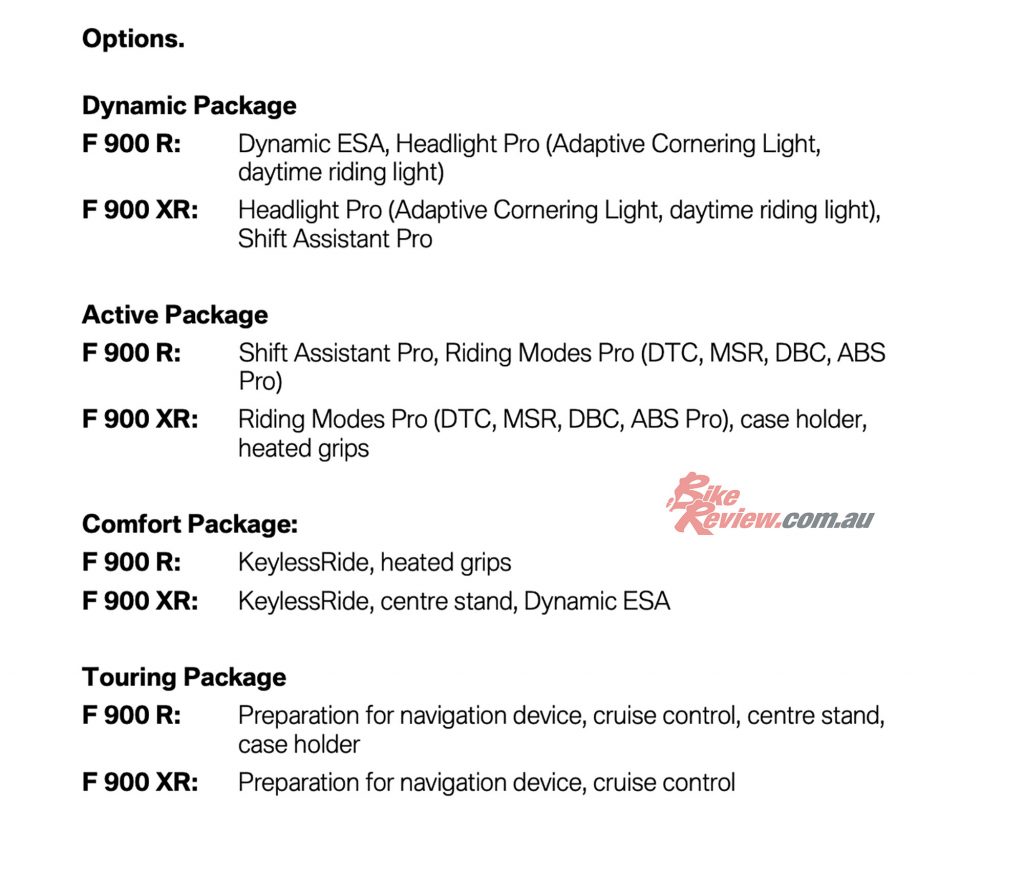 Visit the BMW Motorrad Australia website for more info.
Visit the BMW Motorrad Australia website for more info.
2020 BMW F 900 R & F 900 XR Specifications
Price: From $16,645* Ride Away (R)/$19,835 Ride Away (XR)
Warranty: Three-Years
Claimed Power: 77kW[105hp]@8500rpm
Claimed Torque: 92Nm[67lbs-ft]@6500rpm
Wet/Dry Weight: 211kg (R)/219 (XR) ready to ride (430kg/438kg max weight)
Fuel capacity: 13L (R)/15.5 (XR)
Engine: (Identical engines for R and XR) – 270-degree liquid-cooled parallel twin-cylinder forward inclined eight-valve DOHC dry-sump four-stroke, 86mm x 77mm bore x stroke, 13.1/1 compression ratio, 33.5mm IN/27.2mm EX valves, 48mm throttle-bodies, BMS-M engine control, closed-loop three-way cat converter two-into-two, EU-5 compliant
Gearbox: Six-speed with quickshifter
Clutch: Wet multiplate anti-hop clutch, cable actuation.
Chassis: Steel bridge monocoque frame, load-bearing engine.
Steering angle: 60.5° (BMW spec)
Castor: 114.3mm (R)/105.2mm(XR)
Suspension: 43mm forks/no adjustability, 135 (R) 170 travel (XR), remote preload/rebound adjustable shock, 142mm (R)/172mm (XR) travel
Brakes: 320mm floating rotors (f), four-piston radial-mount Brembo calipers and Nissin master-cylinder, 265mm rotor (r), single-piston floating caliper
Wheels & Tyres: 3.50 x 17in (f) / 5.50 x 17in (r) die-cast alloy wheels, 120/70-17 (f), 180/55-17 (r) Dunlop Sportmax Roadsport 2 (R) and Michelin Road 5 GT (XR)
Dimensions
Wheelbase: 1518 (R)/1521 (XR)mm
Seat height: 815mm (R)/825mm (XR) as tested. options from 770mm to 870mm available.
Ground clearance: N/A
Overall width: 815mm(R)/860mm (XR) no mirrors
Overall Length: 2140mm (R)/2160mm
Claimed fuel consumption: 4.2L/100km
Acceleration claimed: 0 – 100km/h 3.7s(R)/3.6s(XR)
Instruments: TFT display.
2020 BMW F 900 R & F 900 XR Gallery
The Verdict | Review: 2020 BMW F 900 R and F 900 XR

